#Endocannabinoid Receptors
Explore tagged Tumblr posts
Text
this weed education certificate is kind of fun but all i can think abt is how much the voice sounds like the missile
8 notes
·
View notes
Text
La anandamida: la "marihuana natural" del cuerpo humano
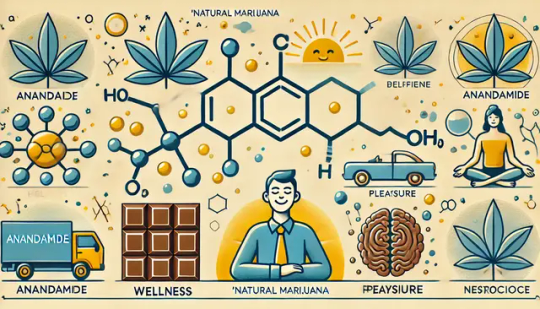
View On WordPress
#Medicina#Felicidad#Estres#neurociencia#neurotransmisores#terapia#sistema nervioso#anandamida#endocannabinoides#receptores CB1 y CB2#chocolate#FAAH
0 notes
Text
Meet beta-caryophyllene, the last novelty in fighting selectively chronic pain
Chronic pain afflicts millions of people around the world and represents a healthcare expense that cannot be effectively mitigated. The use of NSAIDs and opioids is not always effective in all its forms; this is why research has turned to other molecular pathways different from those affected by these two categories of drugs. Neuropathic pain, for example, is a debilitating condition that results…

View On WordPress
#anti-inflammatory#beta-caryophyllene#cell receptor#chronic pain#cytokines#endocannabinoids#fibromialgia#inflammasome#neuroinflammation#neuropathic pain#oxidative stress#pain threshold#rheumatoid arthritis
0 notes
Text
The Endocannabinoid System: Exploring the CB1 and CB2 Receptors
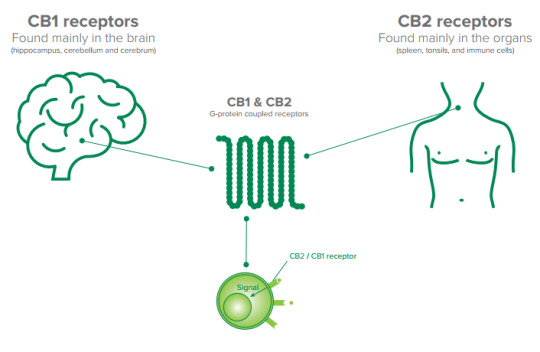
Introduction
The endocannabinoid system (ECS) is a complex network of receptors and neurotransmitters that plays a crucial role in maintaining physiological stability, also known as homeostasis. Two primary subtypes of cannabinoid receptors within the ECS are CB1 and CB2. These receptors are distributed throughout the central nervous and immune systems, and their discovery has revolutionised our understanding of how the body functions.
Discovery of Endocannabinoids
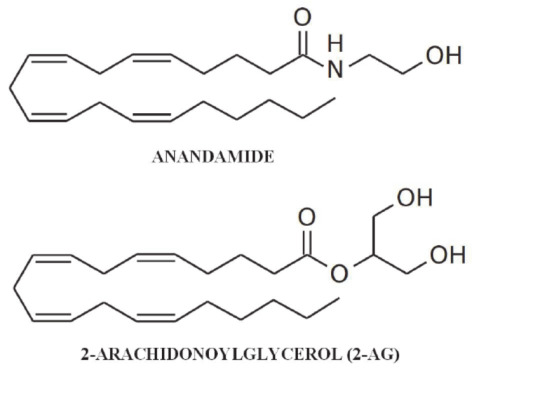
Following the identification of cannabinoid receptors, scientists embarked on a quest to uncover the substances produced naturally within the body that bind to these receptors. In the early 1990s, this pursuit led to the discovery of the first endocannabinoids, anandamide and 2-AG. Since then, three additional endocannabinoids have been isolated. These endocannabinoids, being fats, are not water-soluble, which limits their ability to efficiently move through the body. As a result, they primarily function locally.
Local Activity and Synaptic Function
One important local activity of endocannabinoids occurs when they act as the primary messengers across synapses, the gaps between nerve cells. By signalling neurons to communicate with each other through the release of neurotransmitters, endocannabinoids play a vital role in modulating the flow of neurotransmitters. This modulation ensures the smooth functioning of our nervous system. Recent research has revealed that the role of endocannabinoids in synaptic function is more significant and complex than previously believed.
Homeostasis and Disease
Endocannabinoids are produced on demand, released back across the synapse, and rapidly metabolised within cells. They are closely associated with the concept of homeostasis, helping to restore specific imbalances caused by disease or injury. The role of endocannabinoids in pain signaling has led researchers to hypothesize that their levels may be responsible for the baseline of pain throughout the body. This hypothesis opens up possibilities for using cannabinoid-based medicines in the treatment of conditions such as fibromyalgia. Furthermore, the continuous release of endocannabinoids by the body may have a "tonic" effect on muscle tightness in multiple sclerosis, neuropathic pain, inflammation, and even baseline appetite.
CB1 Receptors: The Brain's Circuit Breaker
The CB1 receptor is widely expressed throughout the brain, forming a crucial component of the ECS. When endocannabinoids bind to CB1 receptors, they act as a "circuit breaker," modulating the release of neurotransmitters. The impact of the endocannabinoid system on brain function is vast and encompasses various regions. However, it is worth noting that the brain stem, responsible for vital functions like respiration and circulation, has relatively few CB1 receptors. This scarcity explains why cannabis overdoses are not fatal. Activation of the CB1 receptor is primarily responsible for the psychoactive effects associated with cannabis consumption.
CB2 Receptors: Guardians of Immune Function
In contrast to CB1 activation, which elicits psychological and physical effects, CB2 receptor activation does not produce these effects. CB2 receptors are primarily found in blood cells, tonsils, and the spleen. From these locations, CB2 receptors regulate the release of cytokines associated with inflammation and general immune function throughout the body. Understanding the role of CB2 receptors provides insights into how the ECS influences immune responses and offers potential avenues for therapeutic interventions targeting inflammation-related disorders.
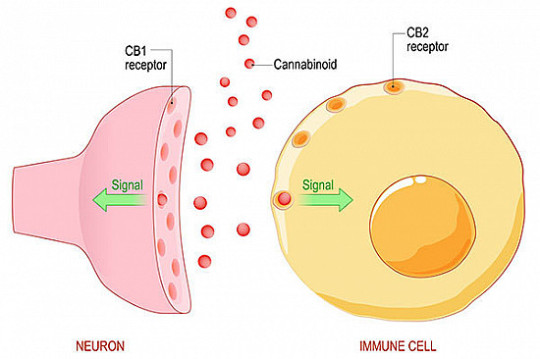
Conclusion
The discovery of the CB1 and CB2 receptors within the endocannabinoid system has unveiled a fascinating network that regulates numerous physiological processes. From modulating neurotransmitter release in the brain to controlling immune responses throughout the body, the ECS plays a vital role in maintaining homeostasis. Further research into the endocannabinoid system and its receptors will undoubtedly shed more light on their intricate functions and pave the way for novel therapeutic approaches.
#endocannabinoidsystem#endocannabinoids#receptors#health#cbd#cbdhealth#cbdoil#feelgreatagain#budandtender
0 notes
Text
Question for monster fuckers/teratophiles.
What do you all thing of venom?
Giving a love bite and any venomous affect.
Maybe paralysis. Maybe pain. Maybe activating endocannabinoid receptors (yes, there is a venom that does that, gets you high). Maybe bleed out. Maybe euphoric dazed bliss where can't comprehend much of what's happening. Maybe insulin (venom research is great).
Any creative usage, helpful usage, or protective usage.
#monster fucker#monster lover#teratophillia#terat0philliac#yandere teratophilia#medicine#sheep speaks
55 notes
·
View notes
Note
I saw your post about estrogen and nicotine. Do you know if there's anything out there about other forms of smoking (weed is the one I'm specifically curious about). Thanks 😊
this is an interesting question as well!
this one seems to be a toss up, however the endocannabinoid system is closely linked to and affected by hormones, and vice versa. it would seem as for some people, using estrogen hrt can cause the body to become more receptive to the effects of cannabinoids, whereas others find that using cannabis may make them more or less susceptible to processing estrogen HRT.
however, there are a very small amount of studies being done on this, and some of them seem dubious at best or rather flimsy. many of the studies i read have inconclusive answers, whereas with nicotine, there are a lot more studies being done on the matter. it seems that for most people, using cannabis will not affect estrogen HRT anywhere near as much due to nicotine as a substance neutralizes estrogens and dilutes the amount of them that you have in your body.
here's some information on the matter, which shows the subjective and inconclusive results, ranging from person to person, study to study:
i hope that helps and makes sense! good luck to you in your journey, if you have any more questions feel free to ask!
#asks#answers#estrogen#hrt#estrogen hrt#hormone replacement therapy#hormones#e#e hrt#smoking#resources#transfem#transfemme#transfeminine#trans woman#trans women#non binary#nonbinary#enby#trans health
82 notes
·
View notes
Text
The endocannabinoid system (ECS) is a biological system first discovered in the late 1980s and early ’90s. It is largely composed of endogenous cannabinoid molecules (endocannabinoids) together with the receptors they interact with and enzymes that regulate their levels in the body. This simply means that the body produces native molecules which are similar in certain ways to plant cannabinoids like THC and play an important role in our normal biology.
The different pieces of the ECS “work together” to modulate everything from sleep to mood, memory, appetite, reproduction, and pain sensation. Scientists still have plenty of questions about the human endocannabinoid system and how it functions, but there is an overarching principle that the ECS seems to embody within the bodily tissues it helps regulate.
Homeostasis: Staying in the Goldilocks zone
15 notes
·
View notes
Text
I will just say about anything under the pretense of open minded expression but in reality there is something wrong with my endocannabinoid receptors
11 notes
·
View notes
Text
CBD Oil works WITH your body to ADDRESS YOUR PAIN FROM WITHIN. With the federal ban on CBD lifted, more and more clinical studies are being conducted every day on cannabinoids (CBD). The cannabinoids found in CBD CARE Oils are the SAME compounds that regulate mood and pain in the brain and body.
ORDER FROM HERE
Harvard Medical released an article on CBD and reported that exact same compound that is currently being used in caring for epilepsy, is also widely available to be used as a supplement for anxiety, insomnia, and used as an option for chronic pain. Another study also indicated that when used topically, CBD could lower pain and inflammation due to arthritis. In just days, the cannabinoids in CBD CARE Drops will tune your entire endocannabinoid system (the network of receptors found throughout your body, including your brain, organs, glands).
#cbd oil#oil pastel#body oil#massage oil#cbd gummies#cbd benefits#cbd#pain reduction#pain relief#andor#911 abc#back pain#joint pain
2 notes
·
View notes
Text
Learned a bunch of stuff last night about how people with early life stress/trauma tend to have depleted endocannabinoid systems and some blunted cannabinoid receptors. Moreso than ppl with trauma acquired in adulthood, interestingly.
Was validating to learn about, bc cannabis is one of the only things that's really helped me.
5 notes
·
View notes
Text
Receptors Being Blocked by Kompany for me, Addie Keating
READ THIS ENTIRE POST AND COMPREHEND IT TO ITS FULLEST EXTENT, OR CEASE AND DESIST.
Progressives: we have reasons to believe The Way are playing you all to a degree that you believe you have a right to control a living human’s biochemical pathways.
*note: similar to dopamine binding receptors, cannabinoids bind to endogenous endocannabinoid receptors in a manner similar to the way that methamphetamine mimics endogenous dopamine molecules. There are no known (edit: insert enzymes) that exclusively bind “drug” molecules. All enzymes and structural proteins in the body serve vital functions. Exploratory research on this accepted postulate will be conducted computationally, the in vitro, followed by the methods laid out by the U.S. Federal Drug Administration. Human experimentation on a non consenting subject are illegal and grounds for immediate arrest.
HIPPA LAW STATES THAT I HAVE A RIGHT TO MEDICAL PRIVACY, EVEN AS A PUBLIC CITIZEN
I HAVE NEVER CONSENTED TO HALLUCINOGENIC OR STIMULANT BASED RESEARCH. ALL RECEPTOR BINDING INTERACTION STUDIES (ie. Marcus theory, overdose prevention, etc.) CONDUCTED BY “G’s Students” HERE IN AMERICA AND AROUND THE WORLD ARE FINISHED AS OF 4:13 PM (Eastern Standard Time), February 17th, 2025. PLEASE SEE MY POST ABOUT APPLYING FOR A POSITION WITH MARK SMITH, GENETICIST IF INTERESTED IN CONDUCTING RESEARCH IN VITRO OR WITH A NEW SUBJECT. I, ADDIE RACHEL KEATING-ZAID—aka ADDIE RACHEL KEATING ZAID, Addy Zaid, Abbie Zacker, Addy Keating, Rachel Keating, Addie Zaid, Addie Keating, or any other “alias” tied to the aforementioned social security number—DO NOT CONSENT TO EXPERIMENTATIONS OR RESEARCH CONDUCTED ON MY BIOPHYSICAL MATTER (brain, muscular framework, metabolic pathways, structural proteins, antibody formation, hormonal production, or anything mind, body, or “soul” altering). All fixed potentials supplied through any physical waveform to an adenosine triphosphate (ATP) battery with IP addresses pingable inside my body (Her body, Addie Rachel Keating-Zaid) are illegal unless, I, Addie Rachel Keating-Zaid have outlined a specific method on i_am_q.tumblr.com.
Prioritized Receptors to Prevent Heart Failure, Brain Damage, or Loss of Consciousness (Self-Defined as an inability to perceive my surroundings exactly as the cameras depict them):
5-HT(2A): blocking excess psilocybin (non consensual study)
HST-1: blocking excess Lysergic acid dimethylamide (non consensual drugging)
Kappa-Gamma: blocking excess fentanyl (consensual study up until the aforementioned date and time stamp) will be pulsed open in accordance with the method developed by my former orthopedic surgeon in which the pharmacophore is released upon pain receptors activation mentally (see his method).
GABA-1 & 2: blocking excess alprazolam and unknown benzodiazepines (non consensual drugging) will be pulsed at a steady state nightly, 2200 -0600 EST until built up pharmacophore has been fully metabolized)
ALL AFOREMENTIONED METHODS CAN BE PERFORMED WITHOUT EXTERNAL INTERVENTION BY THE INSTRUMENT TRAINED BY ADDIE KEATING.
RECEPTORS AND PATHWAYS THAT SHOULD NEVER BE BLOCKED FOR LIFE THREATENING REASONS:
-The “tau flap protein” designed to flush neurotoxins from the brain during deep sleep which opens naturally (will complement Kappa gamma and GABA 1 & 2 receptor methods) (literature will be posted in comments later)
-Catecholamine binding receptors (ie. dopamine, epinephrine, norepinephrine, etc.)
-Glycolysis and glyconeogenesis related enzymes
-Endocannabinoid (ie. Arachidonic acid and anandamide synthesis and subsequent metabolites) related receptors
ALL METHODS REPORTED ARE NOT FOR PROFIT AND WERE DONATED TO ME BY LILLY AND FRIENDS, INDEPENDENT RESEARCH CONDUCTED BY A CURRENT STUDENT AT WEST VIRGINIA UNIVERSITY (NO RELATION TO THE UNIVERSITY), AND FRIENDS INTERESTED IN SAVING MY LIFE AS A VICTIM OF SEVERE BREACH OF CLASSIFIED RESEARCH.
#DO NOT JUSTIFY YOUR WAR CRIMES OR CHEMICAL WARFARE#I NEVER CONSENTED TO CANNABINOID OR ENDOCANNABINOID RESEARCH#I NEVER CONSENTED TO PSILOCYBIN RESEARCH#WE ARE NOT RESEARCHING LYSERGIC ACID DIMETHYLAMIDE BINDING WE ARE PREVENTING A PERMATRIP FROM A TERRORIST ATTACK#donald trump#yellowjackets#barbie#fbi#asms#big pharma
4 notes
·
View notes
Text
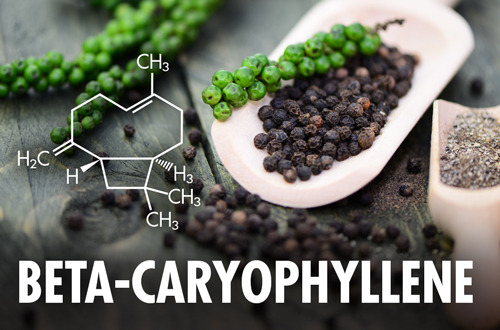
The Role of β-caryophyllene in Combating Inflammation and Pain
β-caryophyllene, commonly referred to as Beta-caryophyllene or simply bcp, has emerged as a game-changing compound in the field of natural pain relief and inflammation management. Found in plants such as black pepper, basil, and oregano, bcp interacts directly with CB2 receptors in the human endocannabinoid system to produce targeted anti-inflammatory effects.
Research reveals that Beta-caryophyllene can inhibit the production of pro-inflammatory cytokines, thus addressing the root cause of inflammation rather than merely masking the symptoms. This positions β-caryophyllene as an ideal solution for those suffering from chronic inflammatory conditions such as arthritis and inflammatory bowel disease.
Another exciting development is the growing acceptance of Beta-caryophyllene as a natural alternative to opioids. Since bcp does not interact with CB1 receptors, it avoids the psychoactive effects associated with THC. As a result, β-caryophyllene can provide pain relief without impairing mental clarity or leading to dependency.
Beyond inflammation and pain, Beta-caryophyllene shows promise in addressing neuropathic pain, a condition often resistant to conventional treatments. For individuals coping with conditions such as diabetic neuropathy, bcp offers hope as a non-toxic and effective treatment option.
Clinical studies are also investigating the role of β-caryophyllene in reducing oxidative stress. By neutralizing free radicals, Beta-caryophyllene could further mitigate chronic inflammatory conditions, thereby supporting long-term health and wellness.
The journey of bcp from being a simple terpene to a therapeutic powerhouse underscores the ingenuity of nature. As research continues to uncover more about Beta-caryophyllene’s mechanisms, its applications are likely to expand across both medical and wellness industries.
1 note
·
View note
Text
(9) Question
Cannabis is probably the least toxic therapeutically active substance known to man. Its Therapeutic Ratio (TR) is so high as to be virtually impossible to calculate but is believed to be between 1:20000 and 1:40000. Thus if 100mg of cannabis would produce an effect, between two to four kilos (taken at once) would be fatal. This amount is, of course, impossible to consume.
Therapeutic Ratio (TR) is the ratio of effective dose for 50% of users (ED50) to lethal dose for 50% of users (LD50). The TR of alcohol is 1:20. TR of heroin is 1:5.
Also, cannabis works on our body because it modulates the endocannabinoid system which consists of a network of CB1 and CB2 receptors throughout the body and endocannabinoids which are the body’s natural chemicals equivalent to the chemicals in the cannabis plant. The CB1 receptor is now believed to be the most prevalent receptor in the brain but does not exist in the brain stem which controls the cardiovascular and pulmonary systems. This is why, unlike opiates, alcohol or other drugs, cannabis cannot depress basic life functions to the point of death.
Many doctors are unaware of the endcocannabinoid system because it was only discovered in 1988 and so has only recently been documented in medical education. It is now believed to be the most important physiological system in our body, regulating the central nervous system, immune, cardiovascular, gastrointestinal and reproductive systems. This is why mankind has found cannabis such a safe and effective medicine for at least 5,000 years for such a wide variety of conditions.
_
INTERESTING.
63 notes
·
View notes
Note
you aren't in canada by chance? because i do have some experience ordering online in canada. As far as strains go, it's probably going to be more of personal preferences, other than the classic indica v sativa divide. As far as dosing goes, what was the dosage on your 1:1 gummies, and how did you enjoy them?
no i’m not in canada i’m in florida
i dont have 1:1 gummies, i never tried 1:1 THC-CBD
my edible experience has exclusively been
1.) gummies from nicks nugs (10mg Δ9 THC & 75mg CBD per gummy) though i cut it into quarters and dose based on vibes, never really a full gummy at a time. that ratio is 1:7.5, not 1:1. im not sure if it’s indica, sativa, or hybrid but i assume it’s primarily indica? they were from my friend and she uses them to sleep so i assume it’s primarily indica. but dosing wise i usually go for half to three quarters of a gummy with these parameters. half a gummy is 5mg THC & 37.5mg CBD. three quarters is 7.5mg THC & 56.25mg CBD.
2.) my neighbor also let me try a indica-sativa hybrid 5mg Δ9 THC cookie with no CBD and i liked the feel i got from it a lot. it felt new, like when i got high for the first time and my endocannabinoid receptors were THC virgins. it was more uplifting, i suppose with the greater bit of sativa mix in there. CBD seems to dampen or mediate the effects of THC so it also felt stronger than half a gummy (5mg) of nick’s nugs but it was good.
but the thing is i dont wanna take weed to go to sleep, but the friend who gave me them is very energetic and they help sedate her, and those nick’s nugs make me sleepy. i suppose finding the right strain for me is about figuring out what i like or want out of the high?
i like:
the sensory component of THC
having 60 fps interpolation for my sensory neurons and proprioception. the way music sounds, the way things look like they’re in 4K on my phone when im under the blanket
associative mental activity with physical relaxation
the infectious “2am at a sleepover” type of giggles
mild tactile hallucinations / hug feeling at higher doses
enhanced pareidolia
probably more i cant think of
i could do without:
being couchlocked
having munchies since im trying to lose weight (but i often fall asleep before i can even eat anything with nick’s nugs lol)
the next day “hangover” (sleepiness) where i’m not as alert
idk what concoction of terpenes would be for me
13 notes
·
View notes
Text
Exploring the Wellness Benefits of Cannabis-Infused Drinks: A Sip Towards Better Health

In recent years, cannabis-infused drinks have emerged as a popular choice for wellness enthusiasts seeking alternative ways to enhance their health routines. These beverages, ranging from CBD-infused teas to THC-infused sodas, offer a convenient and enjoyable way to incorporate cannabinoids into daily wellness practices. Let's delve into the key benefits of incorporating cannabis-infused drinks into your wellness routine and discover how they can contribute to your overall well-being.
Stress Relief and Relaxation:
One of the primary benefits of cannabis-infused drinks is their potential to promote stress relief and relaxation. Cannabinoids like CBD have been widely studied for their anxiolytic properties, which may help alleviate symptoms of stress, anxiety, and tension. Sipping on a CBD-infused tea or beverage can offer a calming effect, allowing you to unwind after a long day and promote a sense of relaxation.
Pain Management:
Cannabis-infused drinks containing CBD or THC have shown promise in managing various types of pain, including chronic pain, inflammation, and discomfort. CBD interacts with the body's endocannabinoid system, which plays a crucial role in regulating pain perception and inflammation. THC, on the other hand, possesses analgesic properties that can help alleviate pain and improve overall comfort. Incorporating these drinks into your wellness routine may provide natural relief from pain without the need for pharmaceutical medications.
Sleep Support:
Many individuals struggle with sleep issues such as insomnia or poor sleep quality, impacting their overall health and well-being. Cannabis-infused drinks can offer support for better sleep by promoting relaxation and reducing anxiety, making it easier to fall asleep and stay asleep throughout the night. CBD-infused beverages are particularly popular for their calming effects, helping to quiet the mind and prepare the body for a restful night's sleep.
Mood Enhancement:
Maintaining positive mental health is essential for overall wellness, and cannabis-infused drinks can play a role in supporting mood balance and emotional well-being. CBD has been shown to interact with serotonin receptors in the brain, which are involved in regulating mood and emotions. By modulating serotonin levels, CBD may help alleviate symptoms of depression, anxiety, and mood disorders, promoting a more positive outlook on life.
Potential Neuroprotective Effects:
Emerging research suggests that cannabinoids like CBD may possess neuroprotective properties, offering potential benefits for brain health and cognitive function. CBD has shown promise in protecting against neurodegenerative diseases such as Alzheimer's and Parkinson's, as well as reducing the risk of age-related cognitive decline. Incorporating CBD-infused drinks into your wellness routine may help support brain health and cognitive vitality as you age.
When it comes to sourcing high-quality cannabis-infused drinks for your wellness routine, SipHowdy stands out as a trusted provider of premium CBD and THC beverages. With a commitment to quality, purity, and transparency, SipHowdy offers a diverse range of cannabis-infused drinks crafted with the finest ingredients and the highest standards of production. Whether you're seeking stress relief, pain management, or sleep support, SipHowdy has a beverage to suit your needs and enhance your wellness journey.In conclusion, cannabis-infused drinks offer a host of potential benefits for overall wellness, including stress relief, pain management, sleep support, mood enhancement, and neuroprotection. By incorporating these beverages into your daily routine, you can enjoy a natural and enjoyable way to promote health, balance, and vitality. With SipHowdy as your trusted partner in wellness, you can sip your way to better health and embrace the transformative power of cannabis-infused beverages.
3 notes
·
View notes